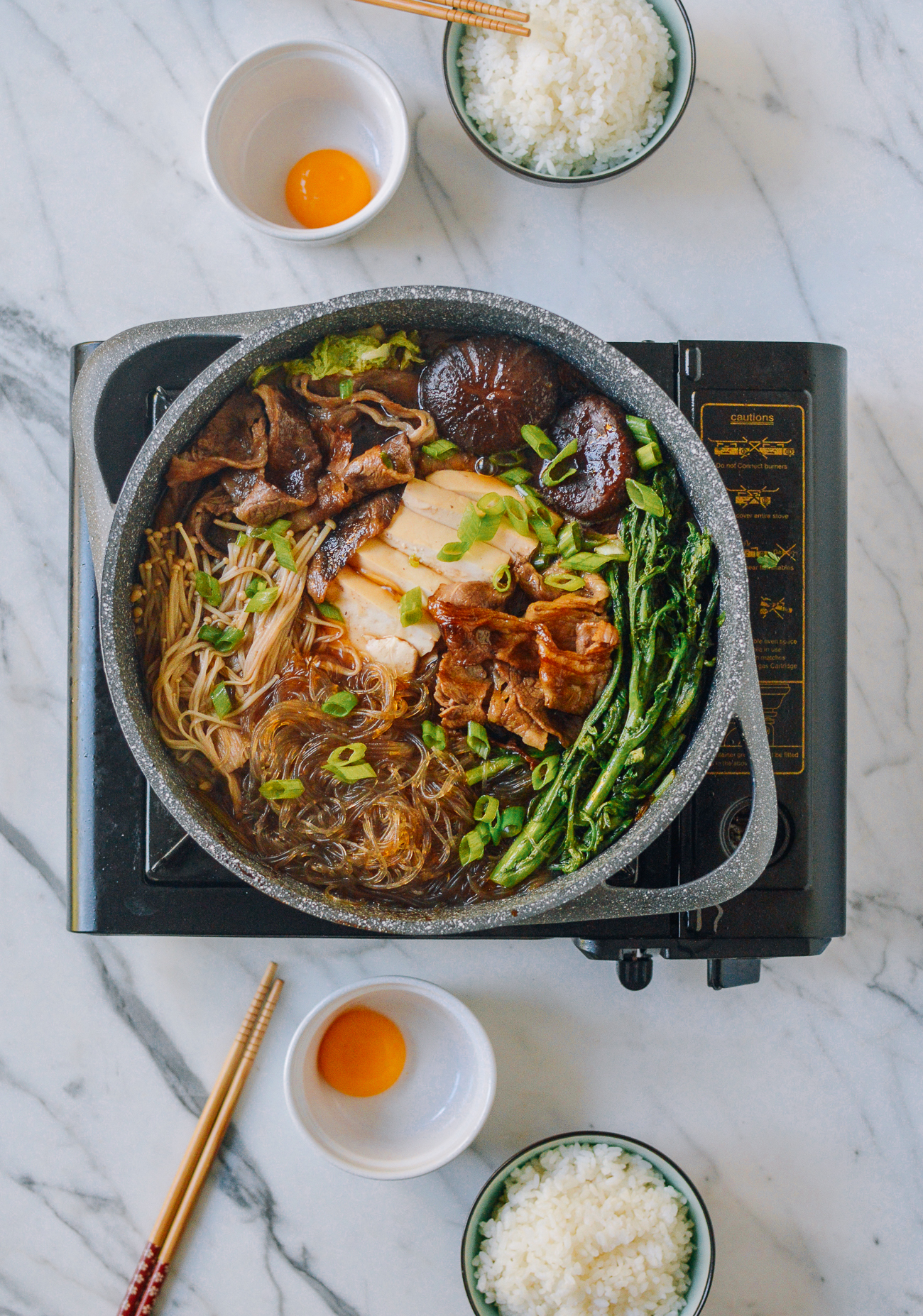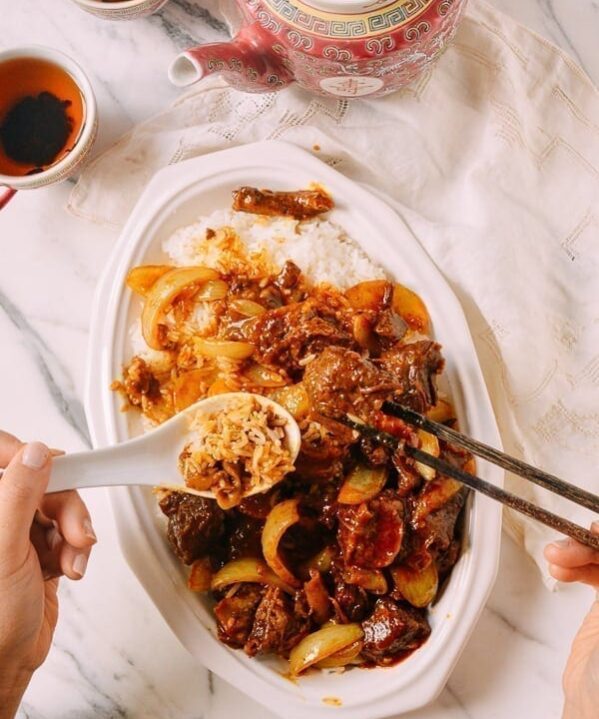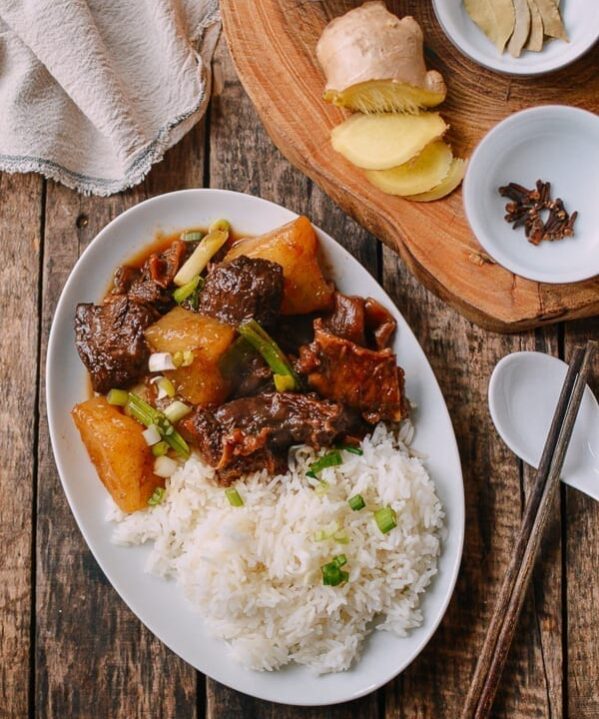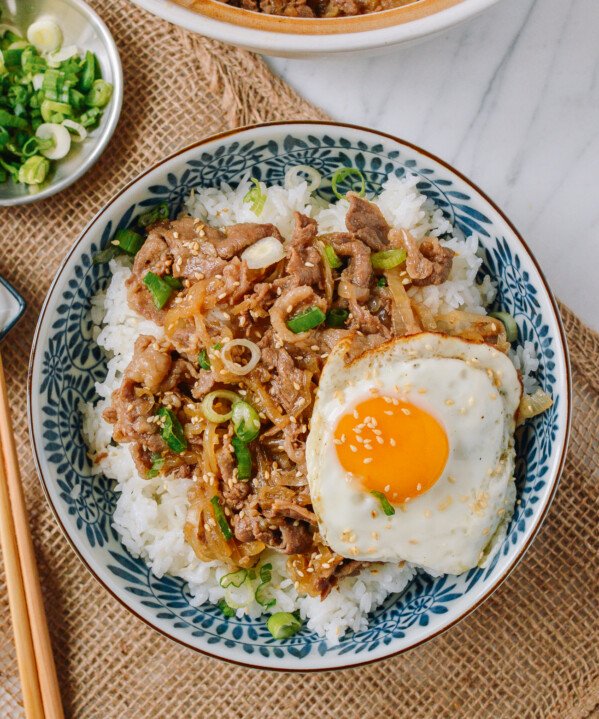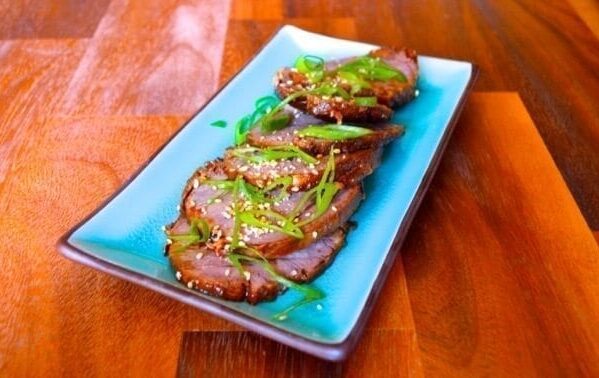Sukiyaki is a Japanese dish served in the nabemono style, or as multiple ingredients boiling in a pot. It’s a delicious, cozy meal you cook and enjoy right at the dining table!
Discovering Sukiyaki
The first time I had Sukiyaki, I was living and working in Beijing. One of the things I miss the most about living there was the work lunches near my office in Sanlitun, an area filled with great restaurants and shopping.
In China generally, lunchtime is serious business. There’s little concept of, “I was so busy with work, I haven’t had a chance to eat lunch.” Noon hits, and it seems like every office building empties out to fill up restaurants and cafeterias across the city.
At lunchtime, I would go out with coworkers to have every kind of meal imaginable. Hand-pulled beef noodle soup in a trendy, tucked away noodle bar, Yunnan-style hot pot, Cantonese roast meats, California-style sushi, the list goes on. And all these lunches were pretty affordable too. (I wasn’t making much in the way of salary at the time, believe me.)
In other words, the decadence levels at weekday lunches were off the charts. Especially when compared to the microwaved leftovers I eat working in New York nowadays.
One of the most memorable lunches I’d have every couple weeks in Beijing was an individual Sukiyaki meal at a Japanese restaurant a few minutes’ walk from my office. I was introduced to the place by a coworker, and she described it as “Japanese hot pot.”
I was relatively new to my new Beijing home and job, and I remember thinking, as I sat there dipping thin slices of fatty beef into rich egg yolk amidst other fashionable Beijing diners, “I could get used to this.”
What is Japanese Sukiyaki?
Sukiyaki is a Japanese hot pot dish with several key ingredients.
- Enoki mushrooms
- Napa cabbage
- Fatty beef
- Noodles
- Tong ho, a leafy green from the chrysanthemum family with a very particular, slightly medicinal flavor that actually goes great with the sweetness of the Sukiyaki sauce/broth.
I actually normally don’t like this vegetable, but I did really enjoy it in this dish! That said, if you can’t find tong ho, you can substitute another leafy green like bok choy or spinach, or simply leave it out.
Everything is cooked in a bubbling pot, and the Sukiyaki is often served with raw egg yolk or beaten raw egg to dip the beef in. I really loved the raw egg, but I do have to do my duty as blogger and friend to warn you that consuming raw or undercooked eggs can increase risk of food-borne illness! The egg yolk component here is totally optional, but if you do want to do it, purchase pasteurized eggs.
Sukiyaki is also traditionally cooked at the table, but if you don’t have a portable electric cooktop or gas burner, you can always cook/simmer it on the stove and then transfer it to the table afterwards!
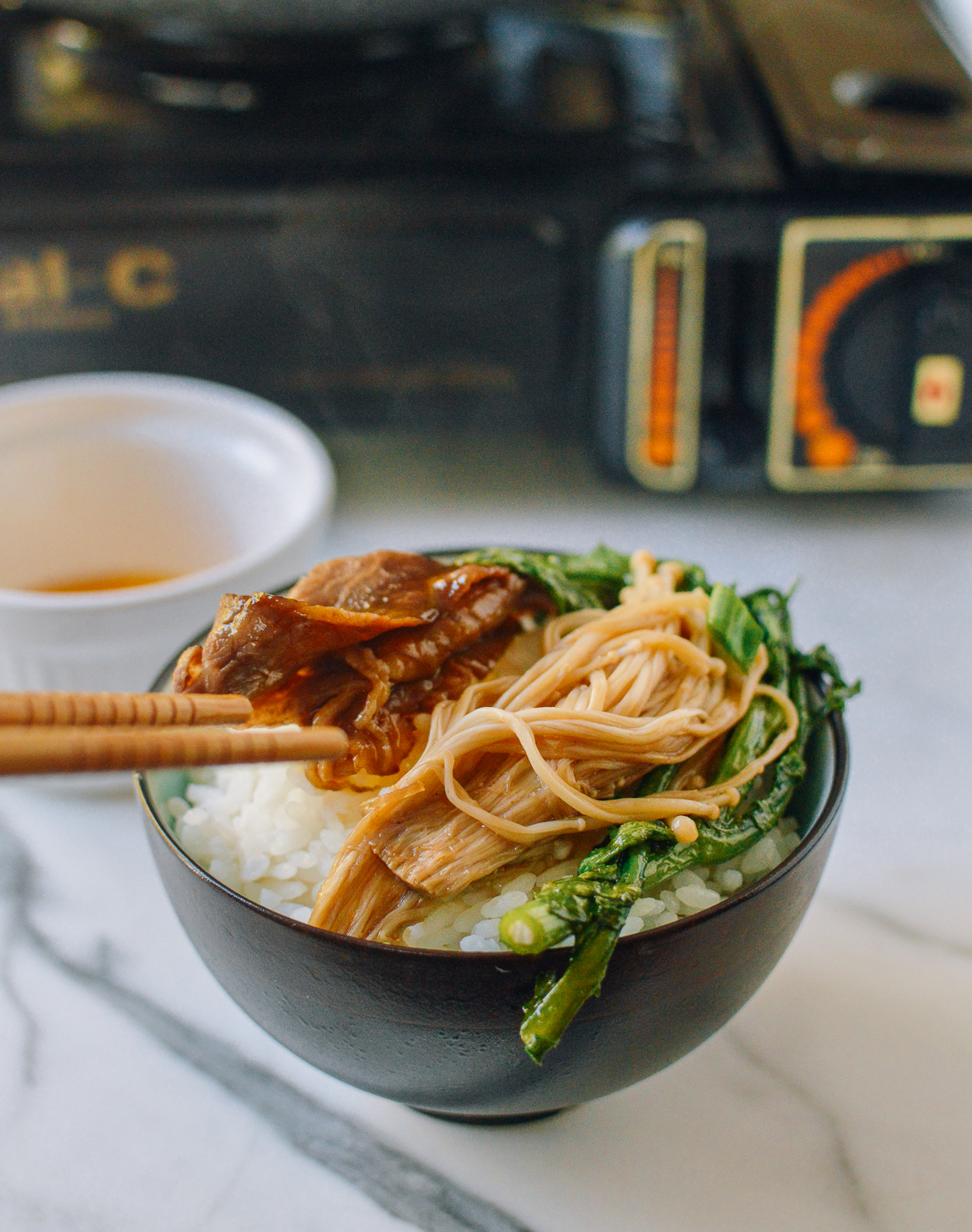
Sukiyaki Recipe: Instructions
In a pot over a portable electric or gas cooktop (or just your regular stove) over medium heat, add 2 tablespoons sake, ¼ cup mirin, 1 tablespoon brown sugar, and ¼ cup soy sauce in a saucepan.
Bring to a boil, turn off the heat, make sure all the sugar is dissolved, and transfer to a bowl.
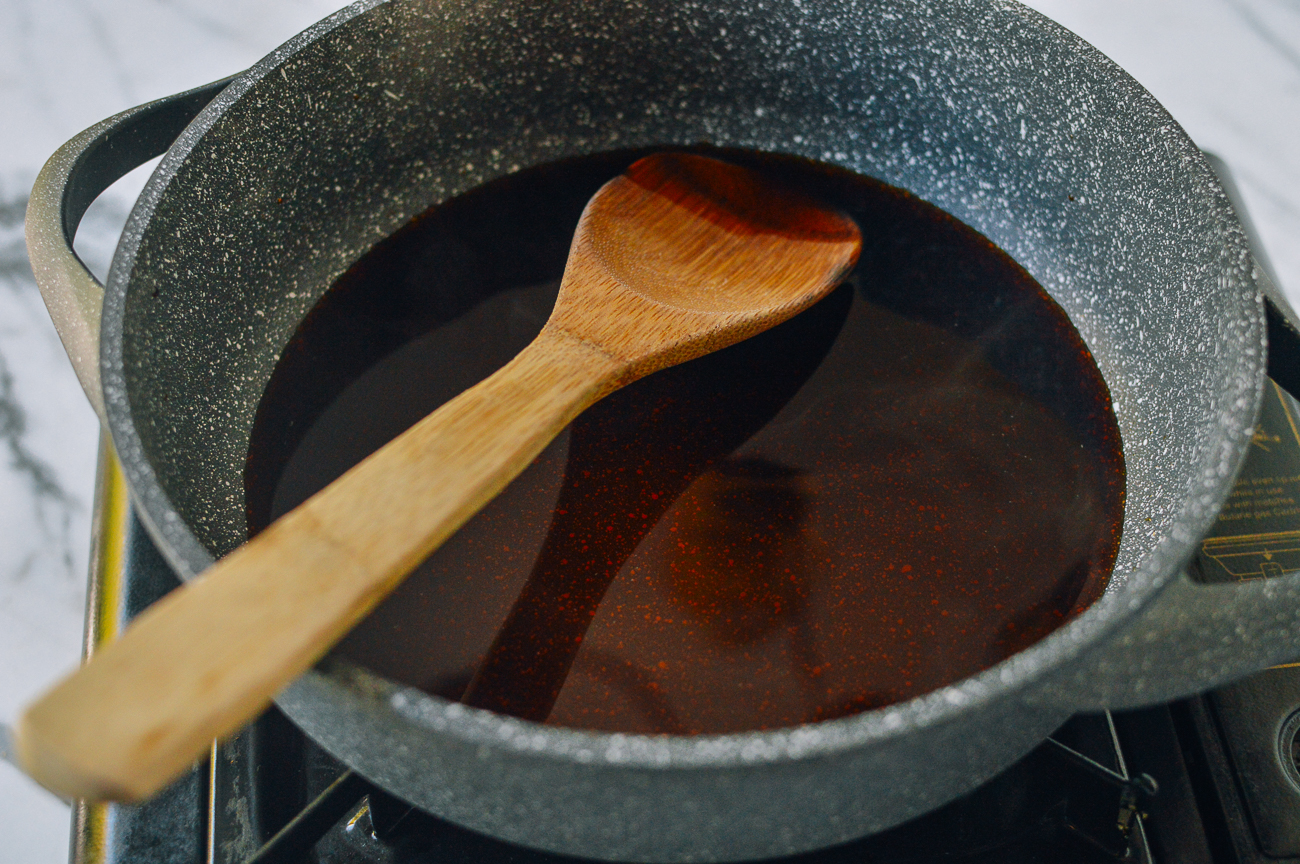
Then prepare all your sukiyaki ingredients––the tofu slices, rehydrated shiitake mushrooms, enoki mushrooms, napa cabbage, tong ho, and scallions. Set aside on a plate. Soak the dried vermicelli noodles in water for 10 minutes.
(You could also use shirataki noodles or udon noodles, in which case you do not need to soak them.)
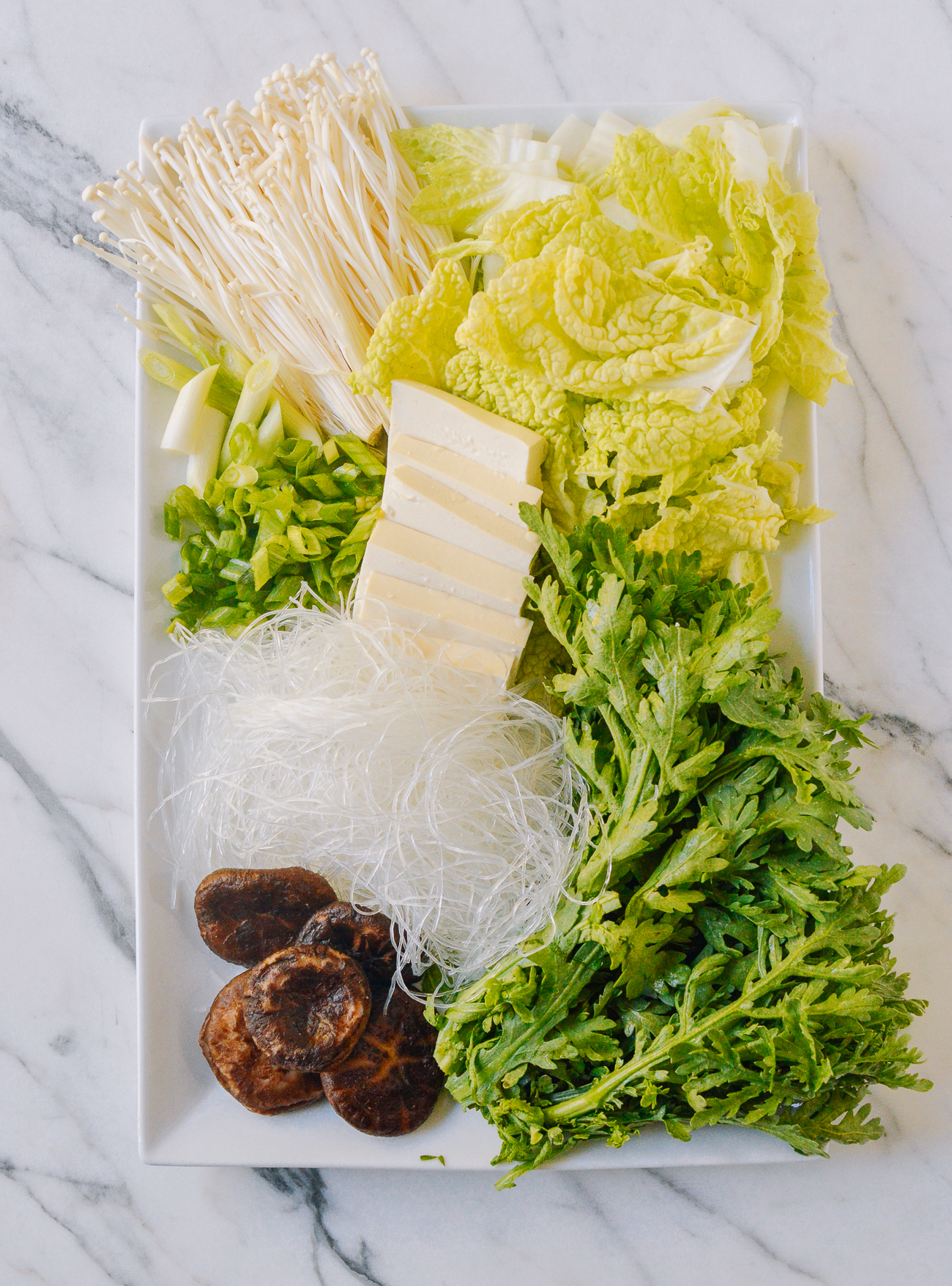
Heat 1 tablespoon vegetable oil in the pan. Fry the white parts of the scallions in the oil for 2 minutes. Chop the green parts of the scallions finely and set aside.
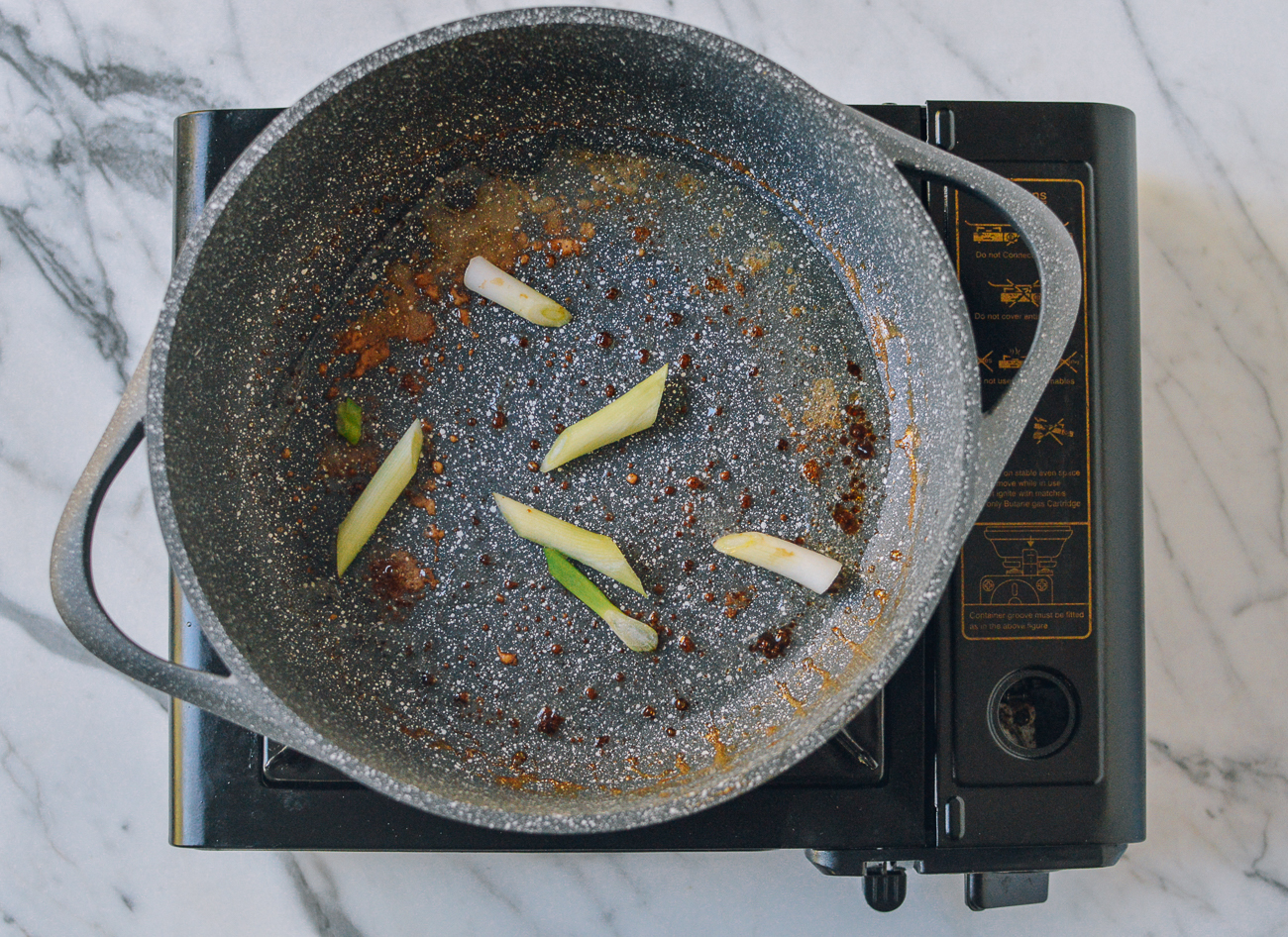
In the pan with the scallions, add the thinly sliced beef. Sear the beef for 10 seconds, and add a drizzle of your sukiyaki sauce.
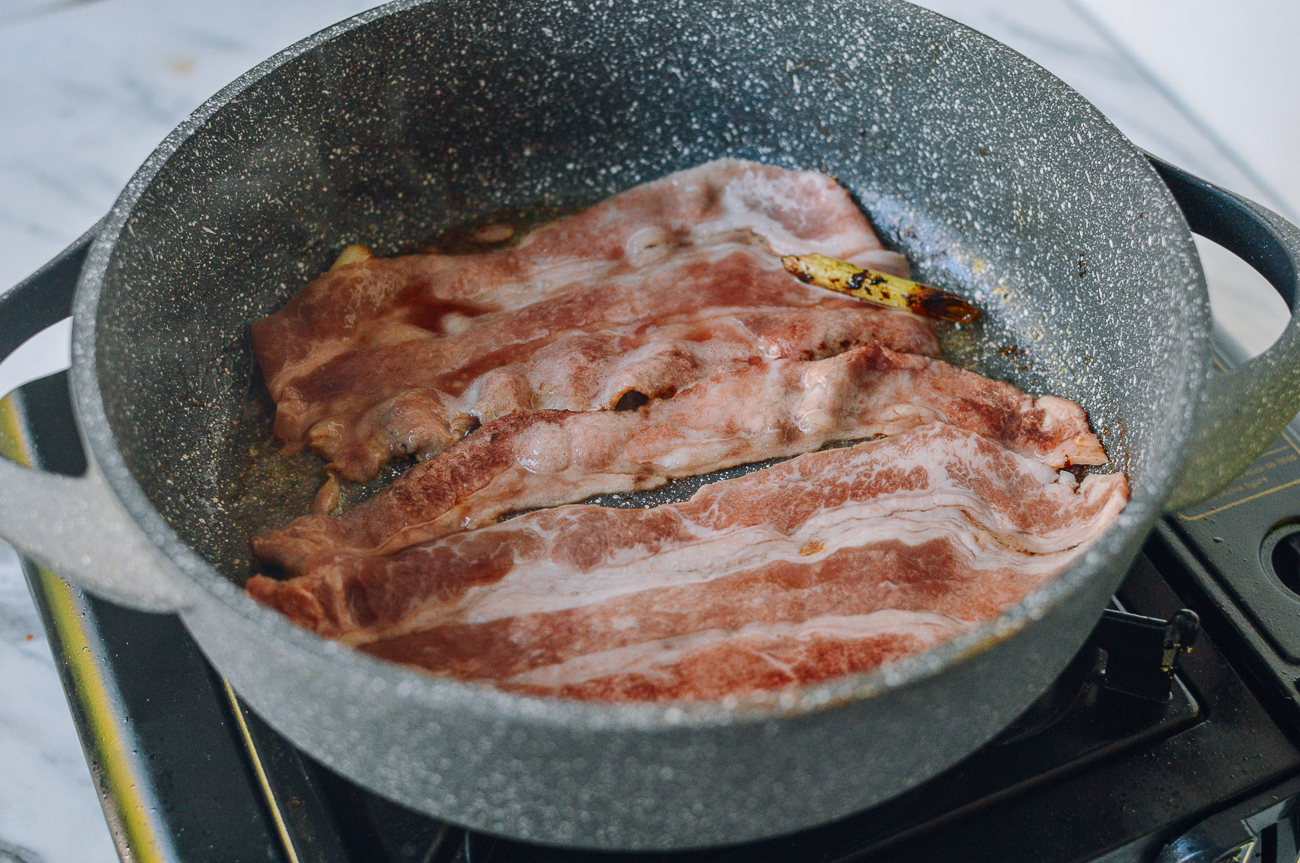
Fry the meat until it just begins to brown––it should still be a bit pink. Remove from the pot and set aside.
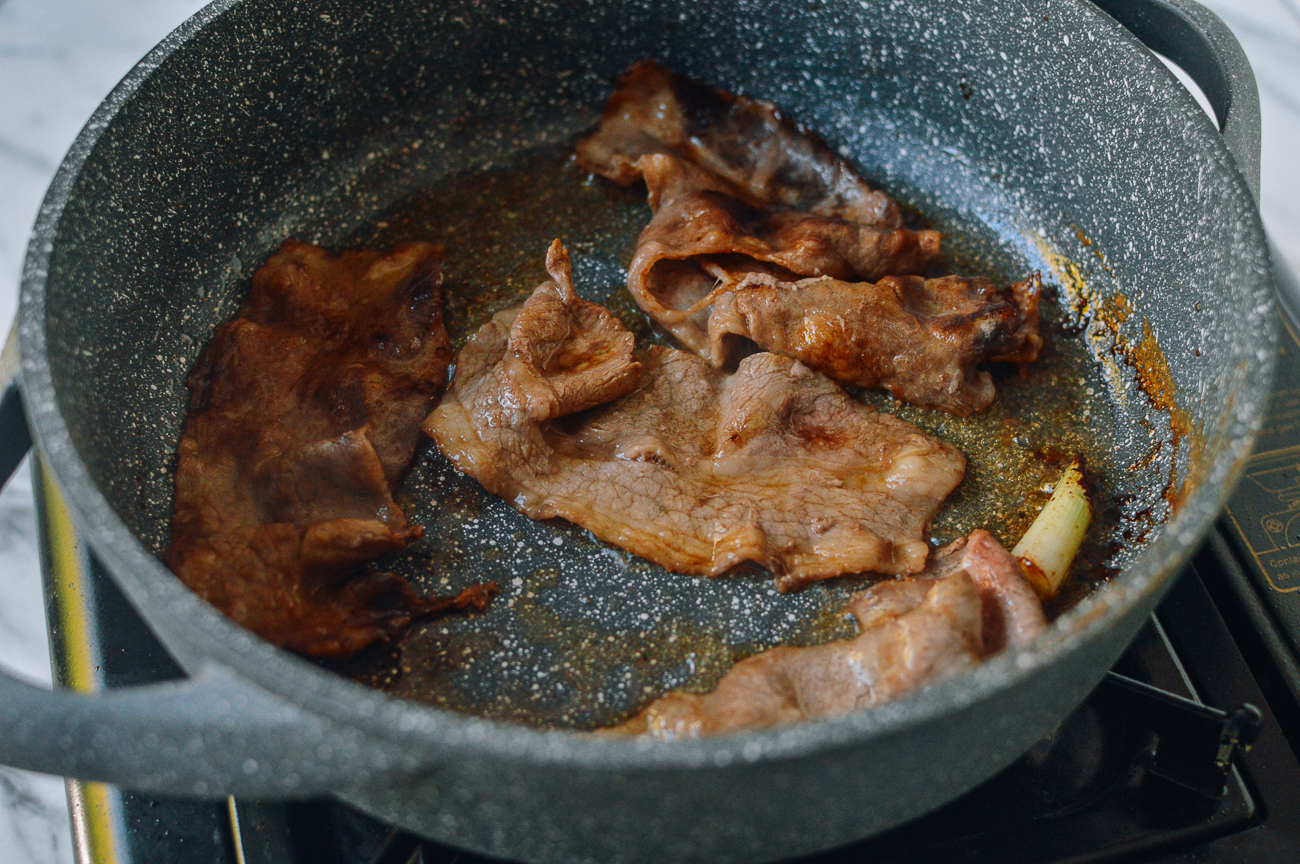
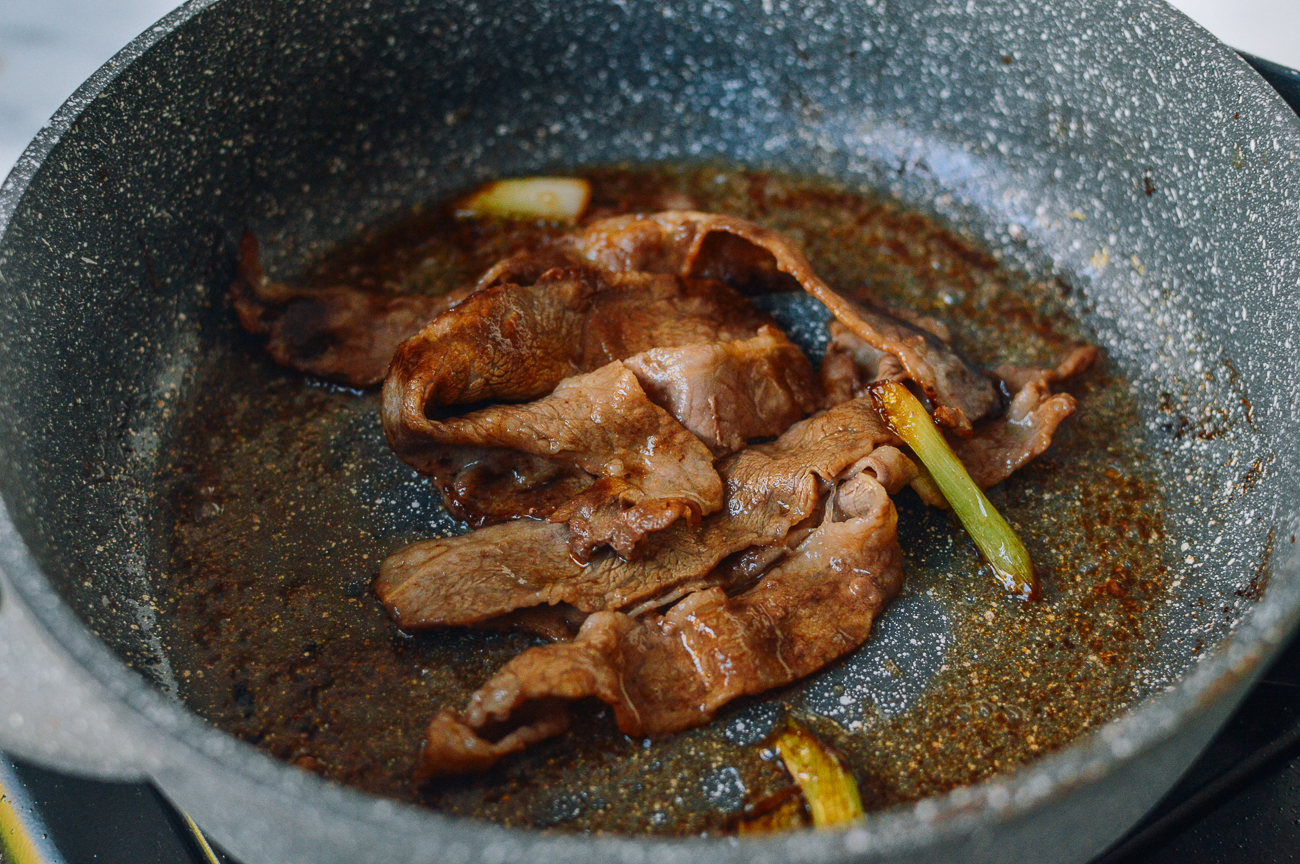
Add the rest of your sukiyaki sauce and 2 cups dashi stock. Bring to a boil.
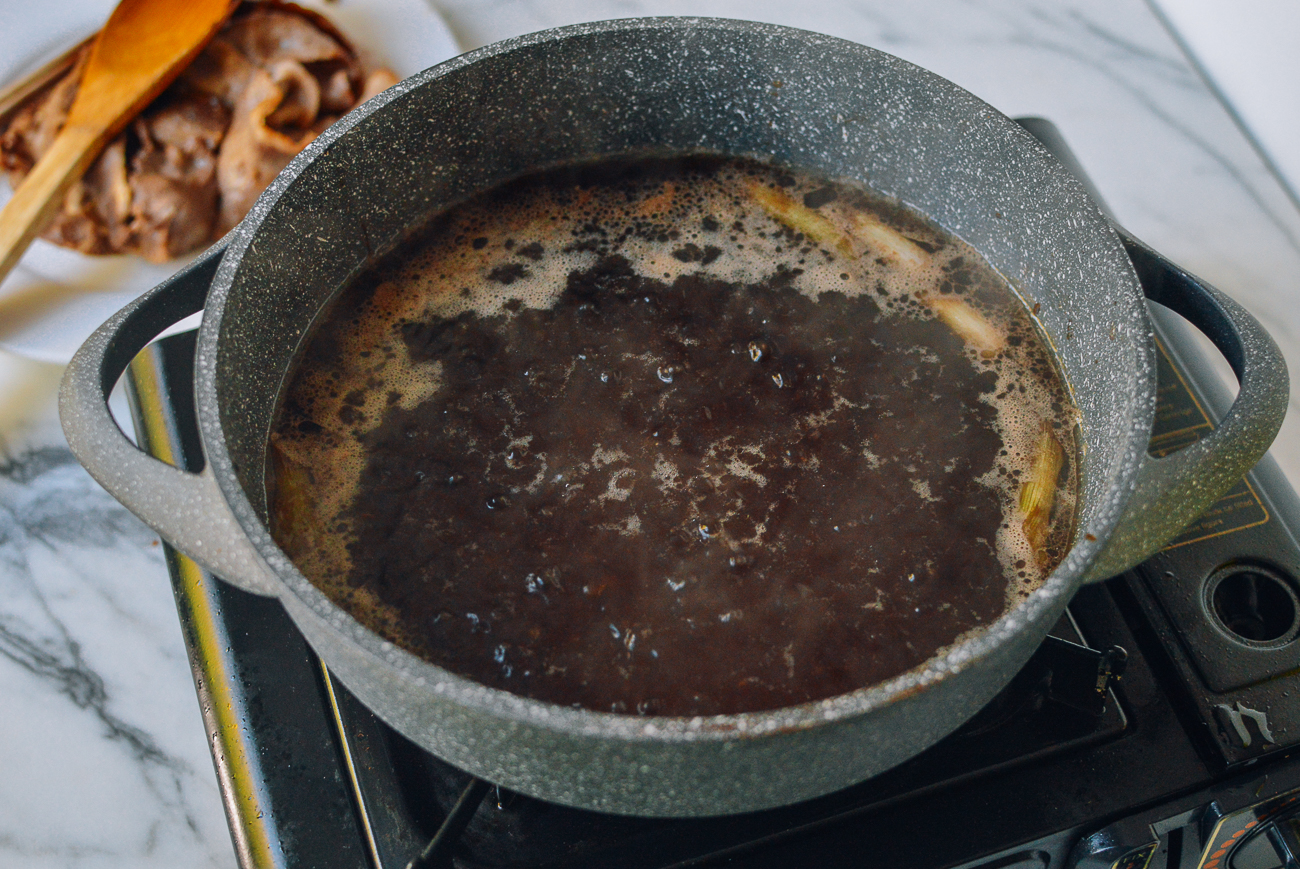
Add the tofu, mushrooms, napa cabbage, and tong ho (chrysanthemum leaves) to the pot in sections. Also drain the vermicelli noodles you soaked and add them to the pot. Cover the pot and bring to a boil.
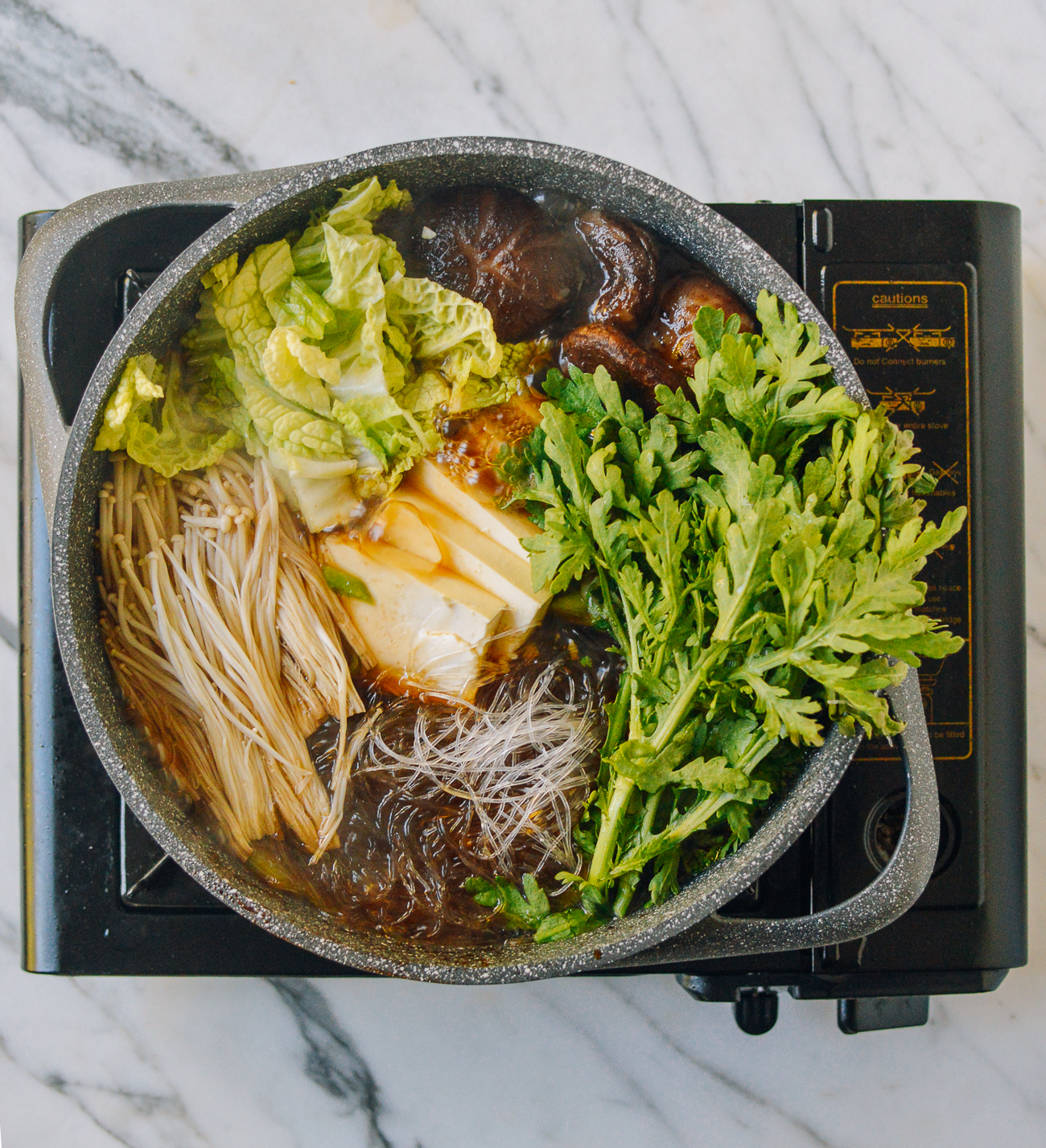
Simmer until the ingredients are cooked through, about 5-7 minutes.
Remove the cover, add the beef back to the pot. Sprinkle with the chopped scallions / green onion, and enjoy with rice and egg yolk (if desired).
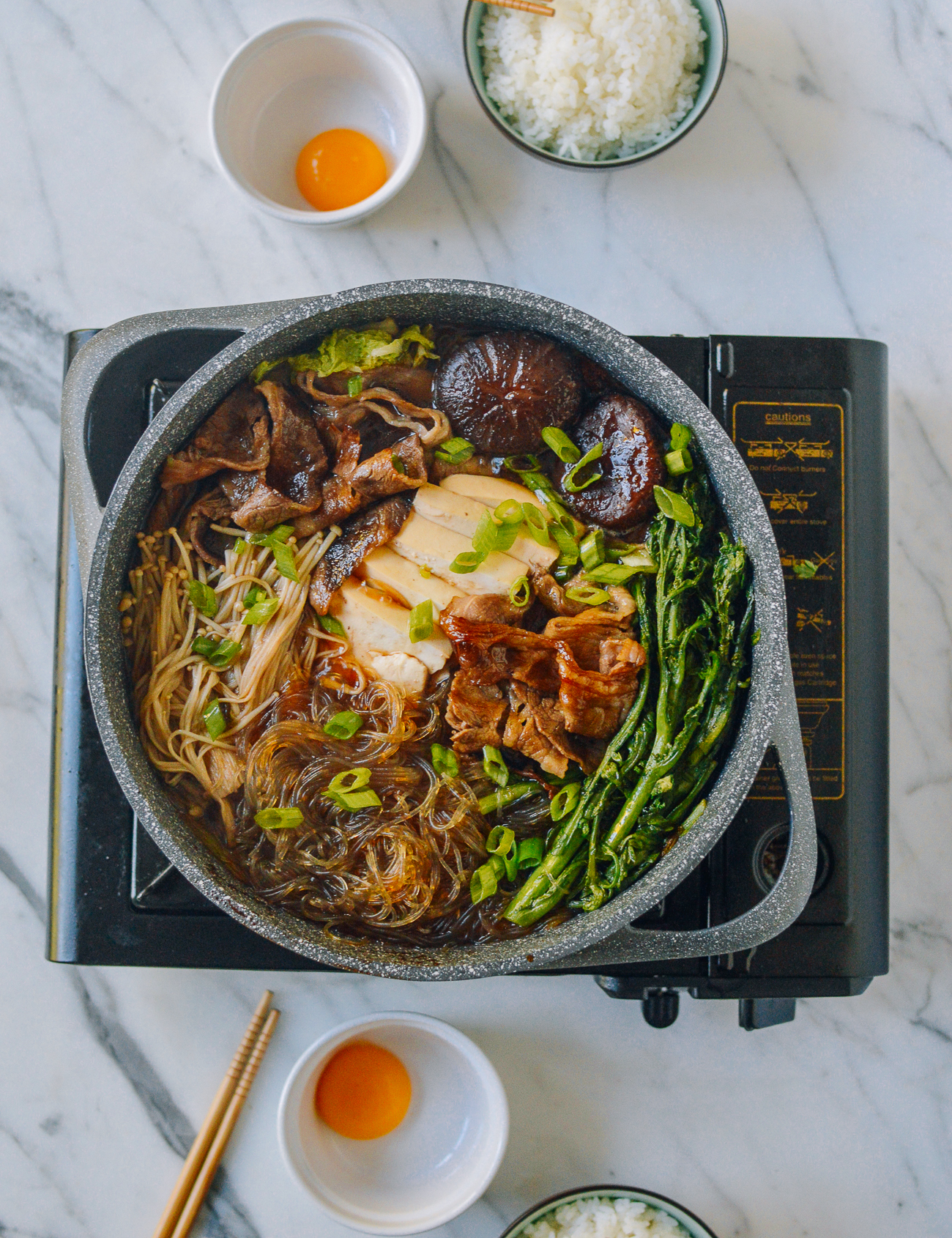
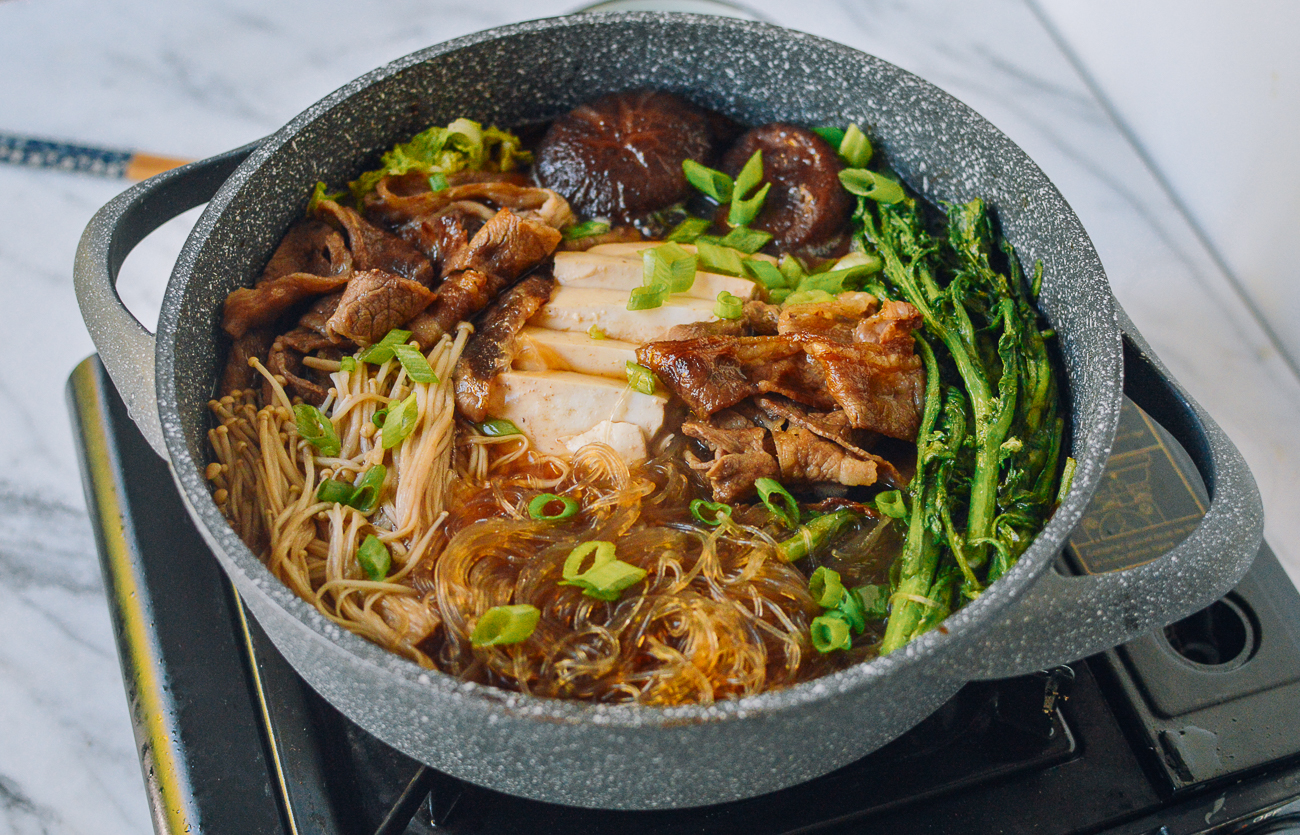
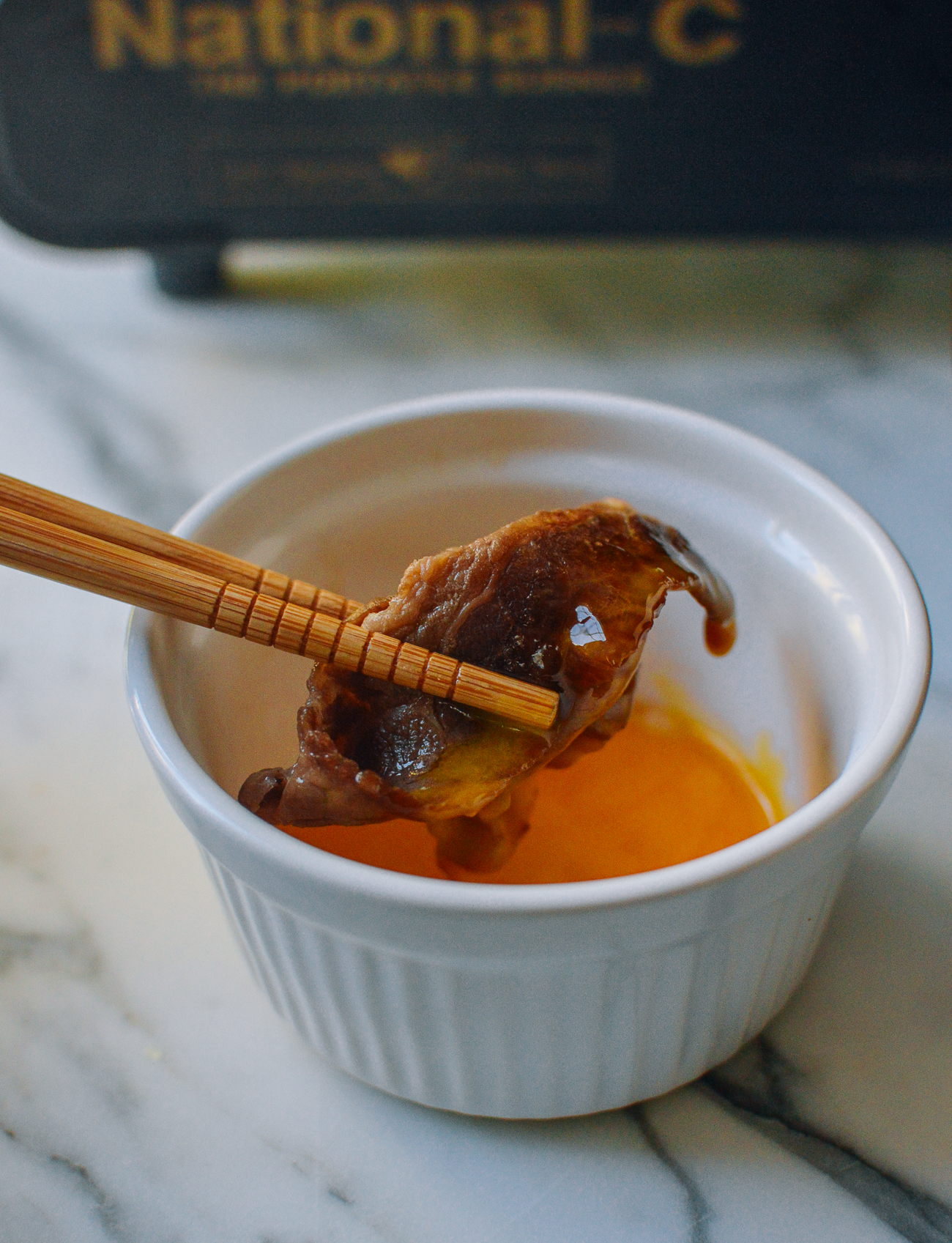
Sukiyaki: A Japanese One Pot Meal
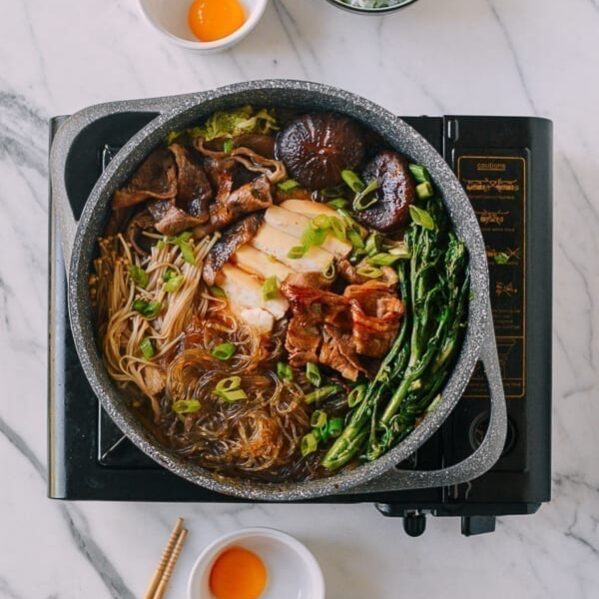
Ingredients
To prepare the sukiyaki:
- ½ block firm tofu (sliced into ½-inch/1cm thick slices)
- 5 dried shiitake mushrooms (rehydrated)
- 1 package enoki mushrooms (ends trimmed and rinsed)
- 2 cups napa cabbage (cut into 2-inch/5cm pieces)
- 2 cups tong ho (chrysanthemum greens, washed)
- 2 scallions (white and green parts separated)
- 1 bundle dried mung bean vermicelli noodles (or shirataki noodles)
- 1 tablespoon vegetable oil
- 12 oz. thinly sliced fatty beef
- 2 cups dashi stock (mushroom soaking liquid, or chicken stock)
- 2 cups steamed rice
- 2 egg yolks (pasteurized, optional)
Instructions
- In a pot over a portable electric or gas cooktop (or just your regular stove) over medium heat, add 2 tablespoons sake, ¼ cup mirin, 1 tablespoon brown sugar, and ¼ cup soy sauce in a saucepan. Bring to a boil, turn off the heat, make sure all the sugar is dissolved, and transfer to a bowl.
- Then prepare all your sukiyaki ingredients––the tofu slices, rehydrated shiitake mushrooms, enoki mushrooms, napa cabbage, tong ho, and scallions. Set aside on a plate. Soak the dried vermicelli noodles in water for 10 minutes.
- Heat 1 tablespoon vegetable oil in the pan. Fry the white parts of the scallions in the oil for 2 minutes. Chop the green parts of the scallions finely and set aside.
- In the pan with the scallions, add the sliced beef. Sear the beef for 10 seconds, and add a drizzle of your sukiyaki sauce. Fry the meat until it just begins to brown––it should still be a bit pink. Remove from the pot and set aside.
- Add the rest of your sukiyaki sauce and 2 cups stock. Bring to a boil, and add the tofu, mushrooms, napa cabbage, and tong ho to the pot in sections. Also drain the vermicelli noodles you soaked and add them to the pot. Cover the pot and bring to a boil. Simmer until the ingredients are cooked through, about 5-7 minutes.
- Remove the cover, add the beef back to the pot. Sprinkle with the chopped scallions, and enjoy with rice and egg yolk (if desired).
